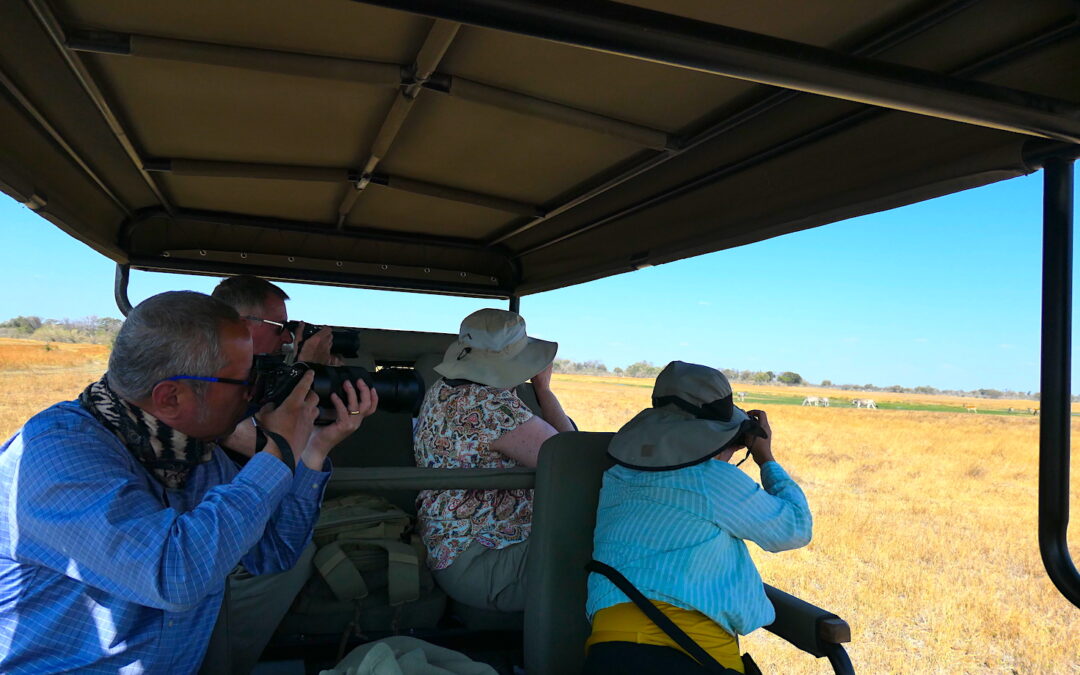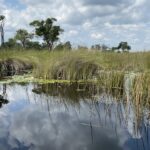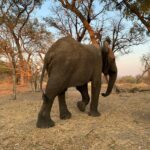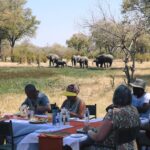
Oct 12, 2019 | Brave Africa Safari, Safari Tips
When planning an African adventure, there are a thousand questions you can and should ask yourselves. But we’re here today to talk about a subject that’s often overlooked by safari-goers. Whether it’s your first time on an African adventure or your tenth, before you choose your Africa safari camp or lodge, ask about your safari vehicle.
The Importance of Your Safari Car
Your safari vehicle could make or break your trip. You’ll be in this car day in and day out for hours upon hours at a time. It will be how you get through the thick and wild Bush, and it will be responsible for taking you to the animals.
You might be surprised to learn that every Africa safari camp and lodge uses different vehicles. Sometimes it’s because they want to offer a special experience for their guests, and other times the differences are just about saving costs.
Choosing a company that uses a crappy safari car will leave you feeling vastly disappointed and jealous of every other safari vehicle you see. But if you’ve never been on safari before, how do you know what’s a good safari vehicle and what’s not?
6 Features You Want in Your Safari Vehicle
At Brave Africa, we have top of the line safari vehicles, and we think the experience is well worth it, but don’t take our word for it.
Let’s dive down into the type of experience you want on your African adventure and the kind of safari car you need to make it happen.
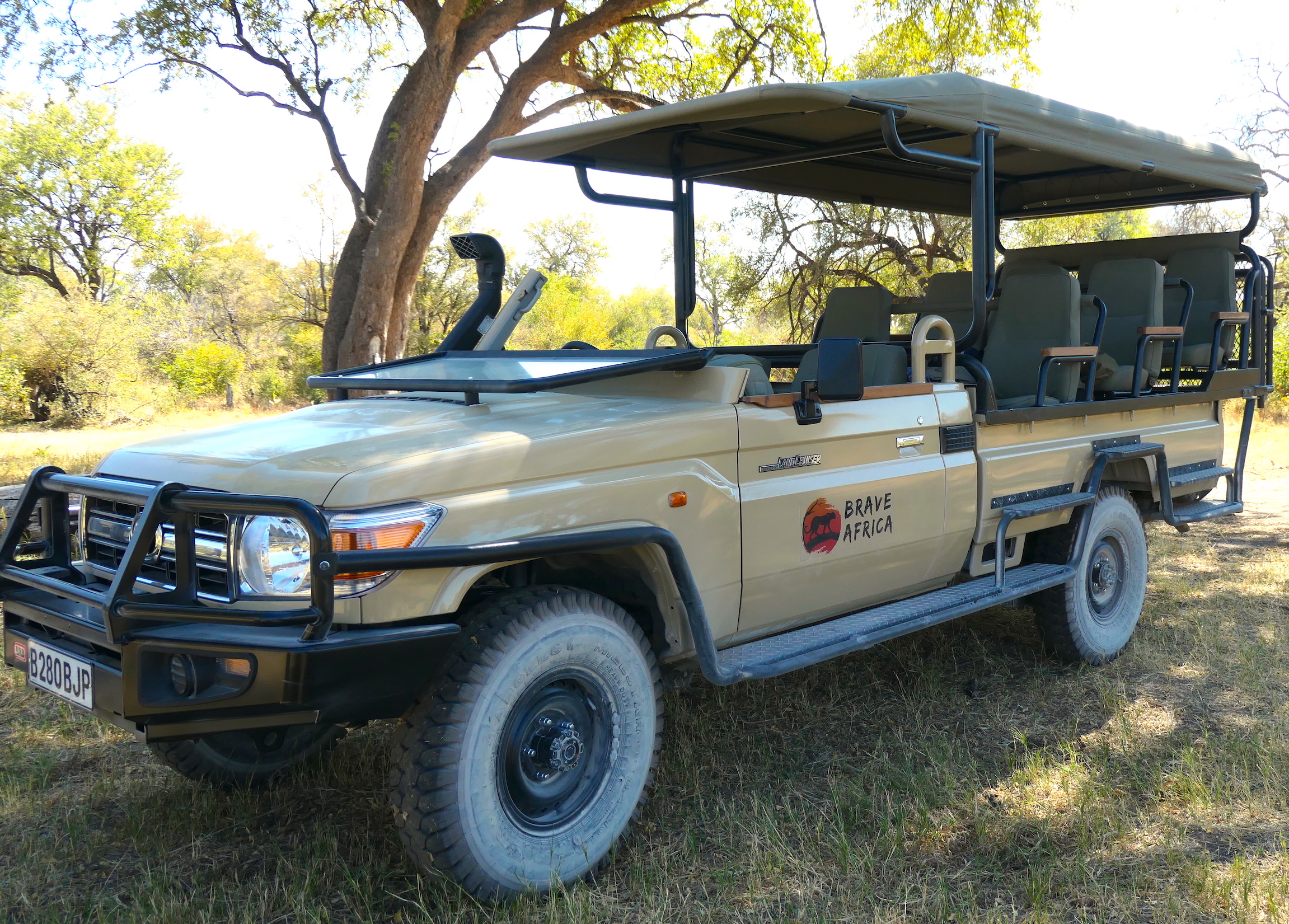
Every Brave Africa safari is custom-built to handle the Botswana Bush. The stadium-style seats in the back are open to the environment but still protected by a canopy from the sun and rain. There’s a snorkel that allows us to go through deep water, custom tires/wheels, a fold-down windshield, USB charging ports, a storage cooler, and more.
1. Toyota Land Cruiser
Twenty-five years ago, the Land Rover was the standard safari vehicle. But as soon as the Toyota Land Cruiser entered the market, it became the new Toyota safari truck, and the game changed forever.
Toyota Land Cruisers are incredible vehicles that can handle the muddiest of conditions without getting stuck. It’s a powerful and dependable vehicle that’s known for exceptional performance, reliability, and durability. It offers a smooth ride even in the toughest of conditions, and it can go for days on a single tank of diesel, of which the safari car has two.
However, an off-the-shelf factory Toyota Land Cruiser isn’t precisely what you’re looking for either. It should be specially modified for safari conditions. These modifications include:
- A snorkel that can handle deep water
- Updated shock and suspension system for a smoother ride
- Increased ground clearance
- Updated wheels and tires specifically designed to handle the African Bush
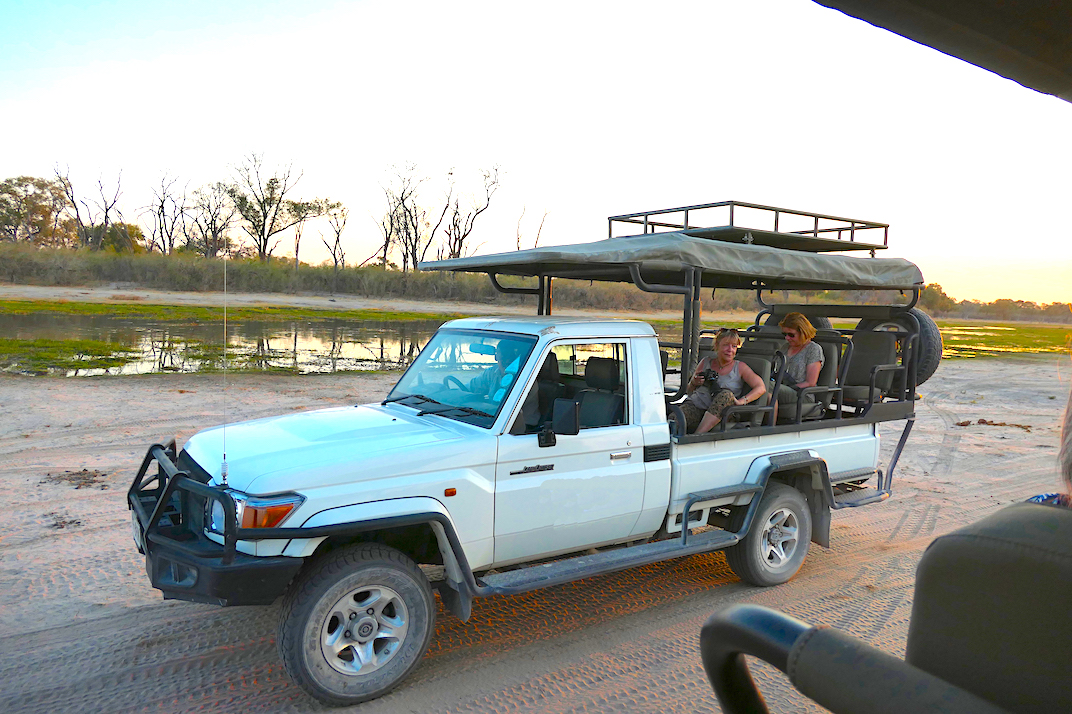
Notice the lack of modifications on this safari vehicle. There is no snorkel, which means deep water will be an issue. There also looks to be little to no modifications when it comes to the wheels/tires, the cab, and more. It’s basically a pickup truck with seating placed on the back.
2. Fully Open Vehicle
If you’ve done any safari research, you’ve probably seen tons of images of different types of vehicles. In Kenya and Tanzania, most safari camps and lodges prefer fully enclosed safari cars where you have to stand up for a clear view of the wildlife without windows.
However, in Southern Africa, including Botswana, you’re mostly going to find safari vehicles with a more open-air approach, but how open it is can drastically change your African adventure.
Open Seating in Your Safari Vehicle
First, let’s talk about your seating area. There are completely open safari vehicles—no windows, doors, or frames blocking your view. Then, some vehicles claim to “protect you from the elements” while at the same time changing how you experience the Bush.
How much access you want to the animals is up to you, but we think the more open, the better. We feel that having something between you and the animals takes away from the magic of your African Adventures. It transforms your experience into something more zoo-like and less “in your face” majesty.
A closed seating area will mean that you’ll deal with less dust, but we think that’s part of the safari experience. We’d rather breathe in a little dust and maybe get wet, but be right there ready and waiting to watch a lion walk by our car or hear an elephant trumpet at us.
However, no matter how open the car is, it’s the seating that matters too. You do not want to be in a car with middle seats. Ask your safari operator how many people they’ll allow per car. We max out at six occupants so that everyone has a window seat, and no one is stuck with a lousy view.
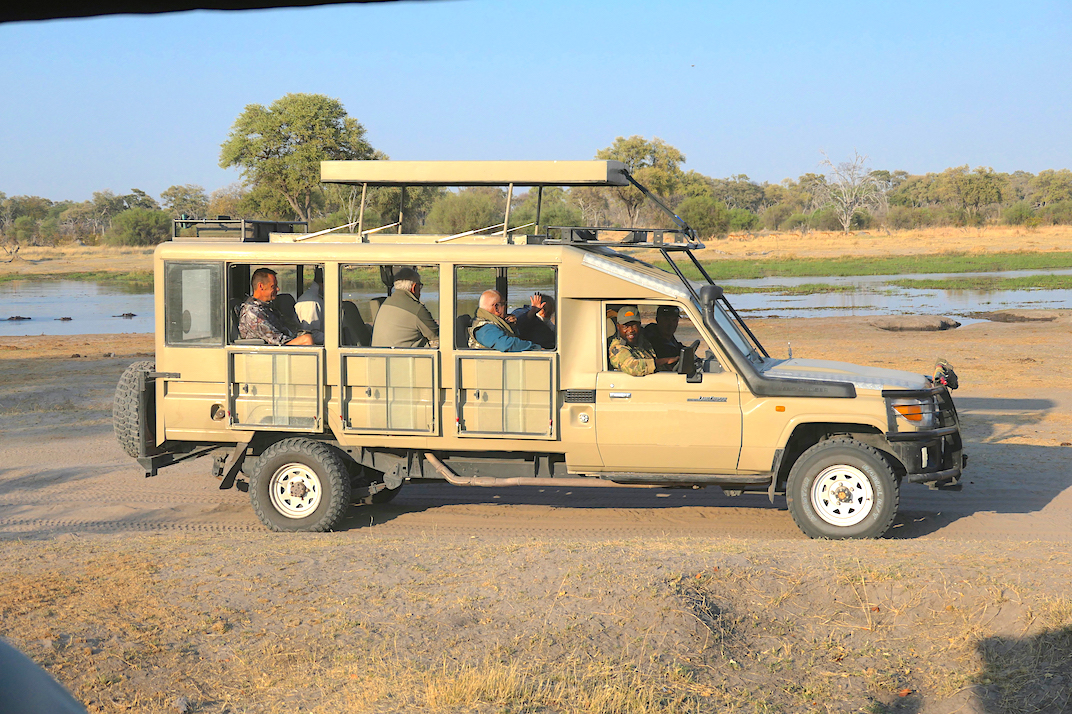
This safari vehicle offers a closed off seating area, which means an obstructed view of the wildlife as well as a hot backseat experience. More likely than not, there’s no air conditioning in the back, and with a closed-off front cab, very little chance for a breeze. That’s tough. And when it comes to birding, this car will not be helpful.
Open Cab Safari Car
Second, let’s talk about the driver’s cab. Even in safari cars where the entire seating area is open to the elements, you might find a situation where the cab is closed. This is definitely something you DO NOT want.
A closed cab means you are closed off from your safari guide. Yes, he or she might still be able to talk to you by leaning out the window, but it’s going to be ten times harder to interact with them, which will greatly detract from your experience.
Your safari guide is essential to your time in the Bush. They’ll explain animal behavior, unique plants, and more. Think of it like being in the car with a live Wikipedia page that can answer all your questions on the spot without the Internet.
Now, imagine that to get to your Wiki page, you had to click ten different buttons to find the answer you wanted. That would get annoying quickly, right? That’s the same with a closed cab. If you don’t have direct and easy access to your guide, you won’t be able to hear what he or she has to tell you throughout your drive, and you’ll lose out on an incredible amount of insight.
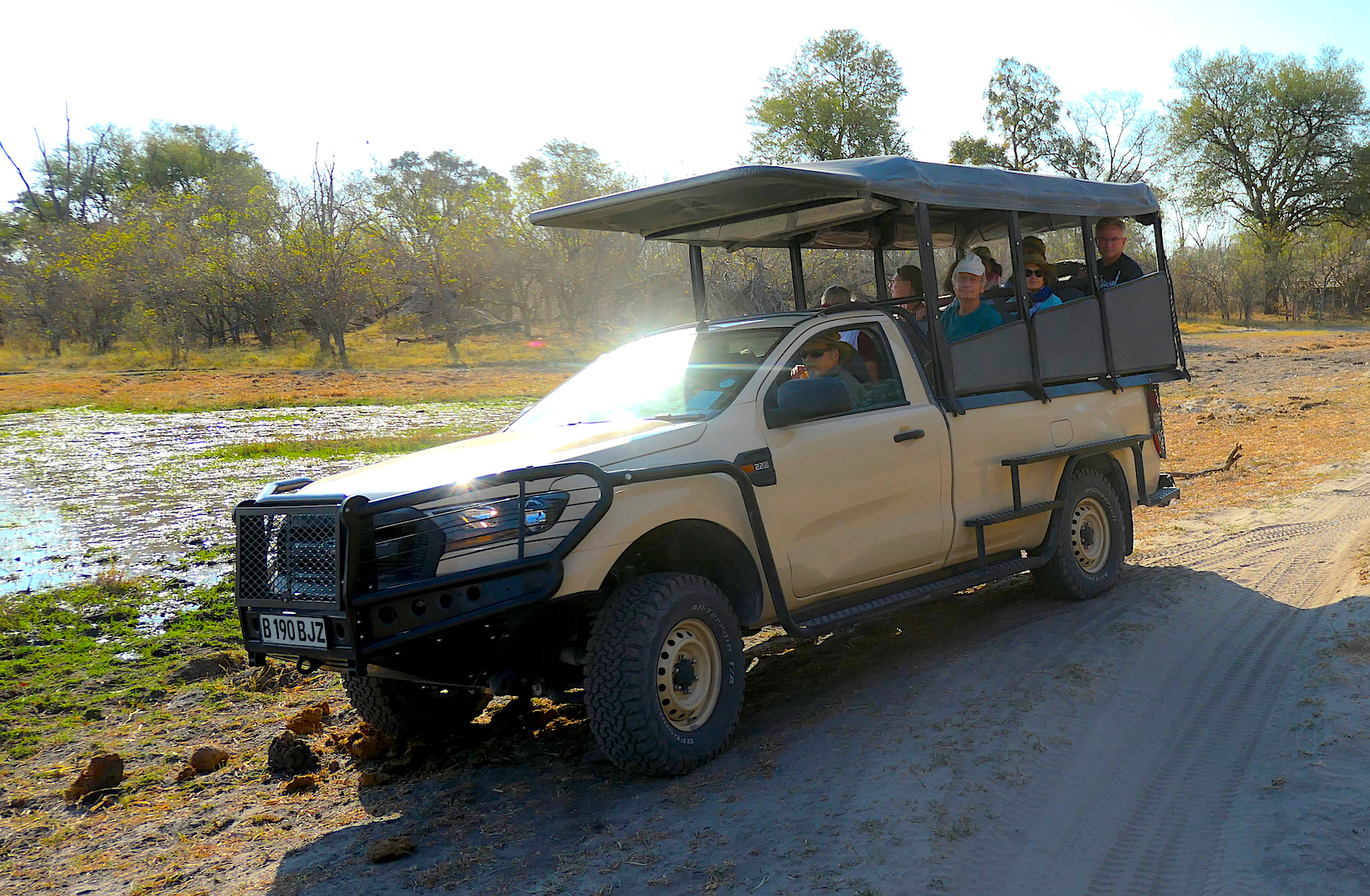
This safari vehicle has a closed cab, which makes it difficult for guests to talk with their guide for a far less personal experience. It also has a very closed in seating area. Those guests in the back row have very limited viewing. Also, notice the middle seat…that’s a lot of guests in one vehicle.
3. Canopy Cover
Now, a fully open vehicle is excellent, except when you don’t have a canopy! Yes, Botswana might be a desert, but that doesn’t mean it won’t ever rain, and when it rains, you want a canopy to keep you from getting soaked. But even when it doesn’t rain, a canopy is fairly essential.
The sun is hot and in Botswana—with an average of 3,300 hours of sunshine every year—and that means you want to be in the shade as much as possible. A fully open cab without even a canopy will mean you have no protection from the elements.
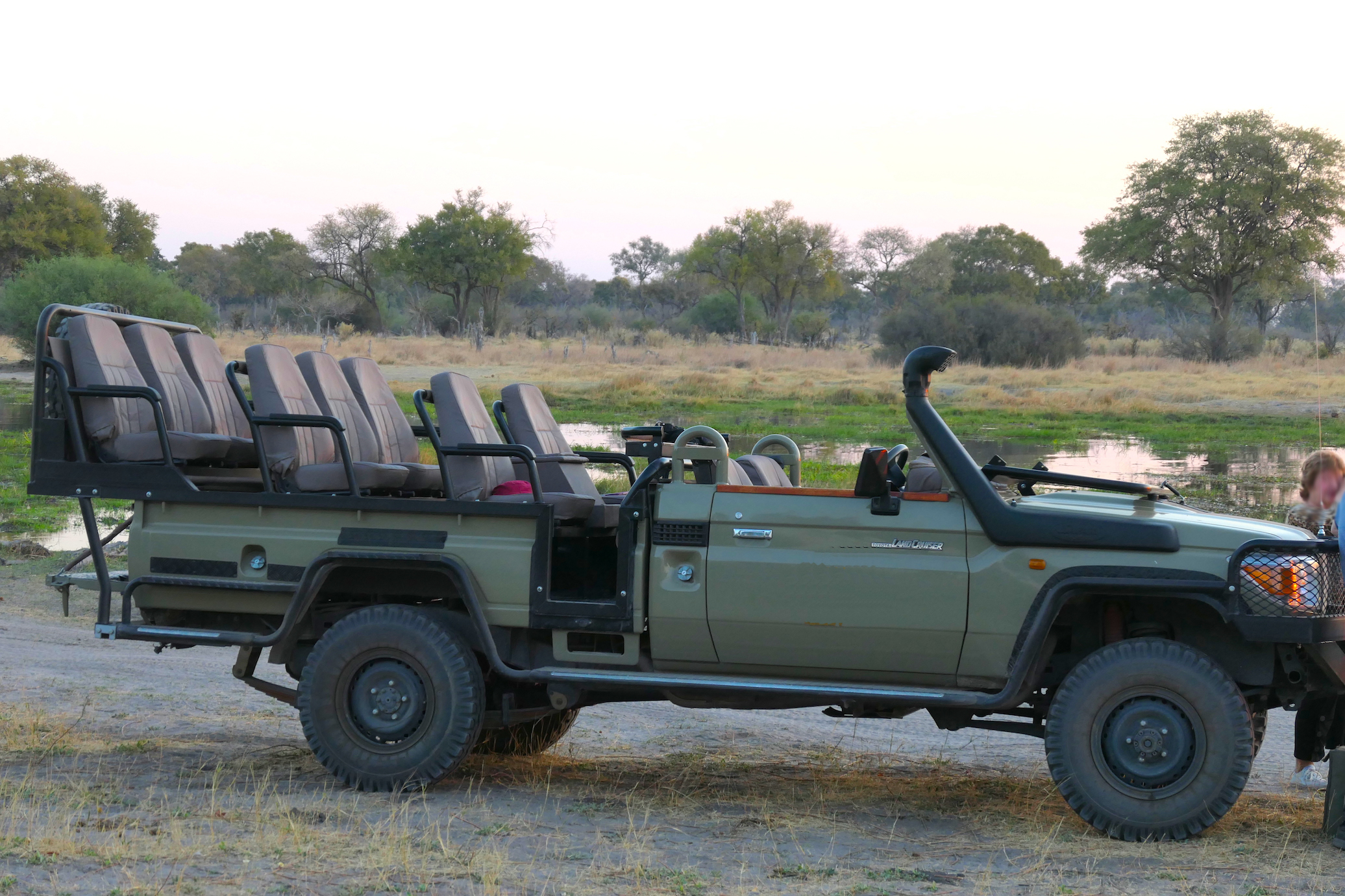
Without a canopy, guests in this vehicle will have no relief from the sun or rain.
4. Safari Car Power Charging
Access to power is critical even in the middle of the Bush. Between our guests’ cameras, phones, and other technology, we know that having the ability to charge your devices is essential to an enjoyable experience. And with 12- to 13-hour game drives, relying on only battery power can be nerve-wracking.
That’s why every Brave Africa safari vehicle offers two USB charging stations at each seat, so you can charge two items at once throughout your daily game drives. You’ll never have to worry about going without power.

Every Brave Africa safari vehicle offers 2 USB ports per seat. Here’s a picture of the four slots for the two front seats.
5. Refrigerator System
When it’s 35 degrees Celsius (95F), it’s way too hot not to have access to ice-cold water, juice, soda, or beer to cool you down in the heat. So, before you choose your African adventure safari, ask the operator if they have a refrigerator system in their safari car.
In the middle of Brave Africa’s first row of passenger seats, we have a large refrigerator that can hold around two dozen cold drinks. This means that no matter how far away from camp you are, you can still enjoy crisp cold drinks on a blistering day.
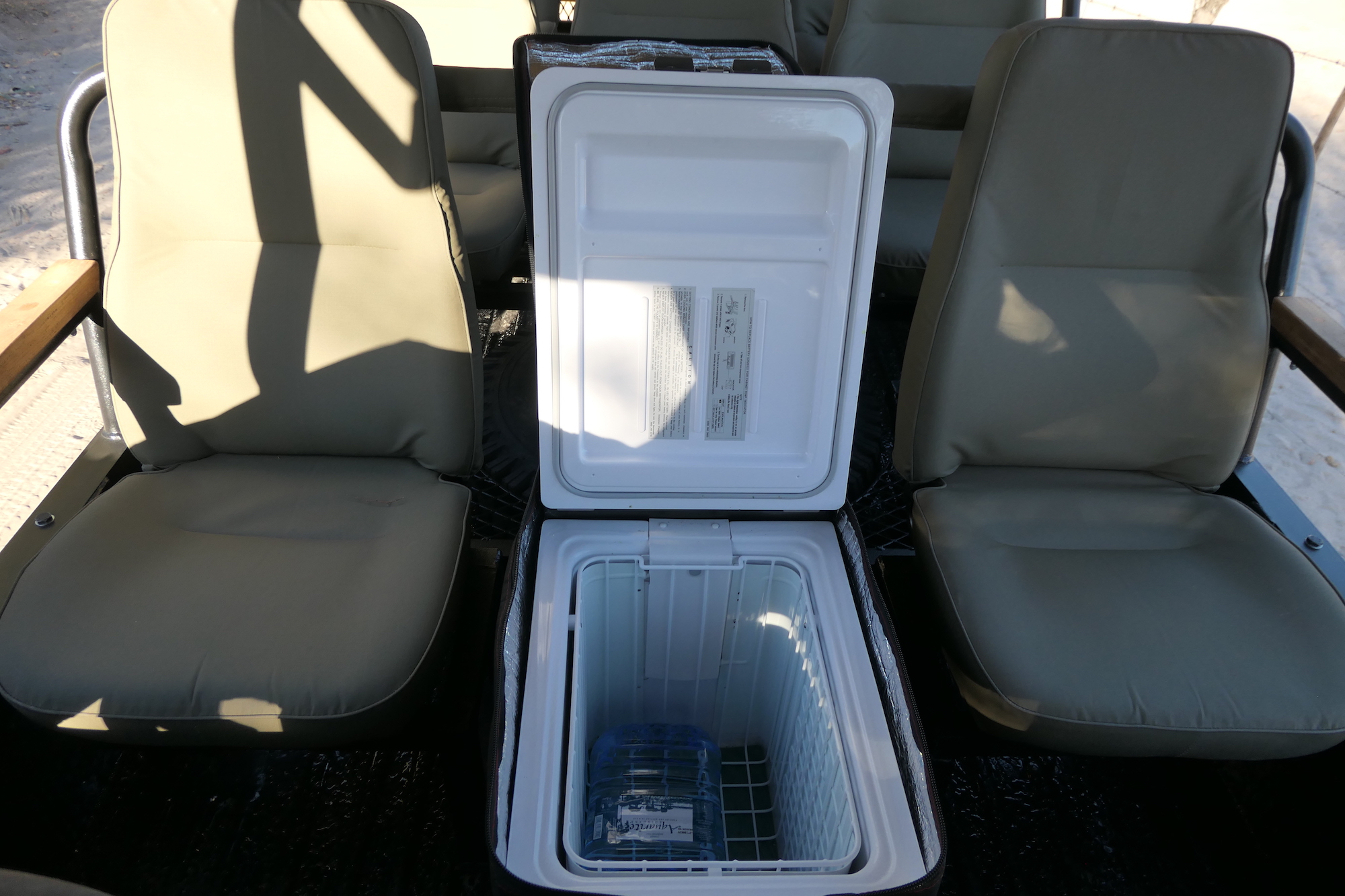
Between the first two seats, we added a cooler for ice-cold drinks and food on every game drive.
6. Storage Options
When you’re on all-day game drives, you need to be able to bring a lot of stuff with you to have a good experience, and that means you need storage space. You need room to store your day bag with your camera, phone, spare jacket, and other personal items. There also needs to be room for snacks, lunch, tables, chairs, and other items you might need on your all-day drive.
At Brave Africa, we max out our vehicle at six guests, so there’s plenty of room to leave your bag. In the back two rows, you can place your stuff in the middle seat. In the front row, you can put your items on top of the refrigerator. There’s also plenty of room to put your bag at your feet as needed.
As for storage for tables and chairs, we’ve built on an extra storage rack on the back of the vehicle. This rack can be folded down or up and used to store guest luggage to and from the airport. We also use it to carry tables and chairs for lunch in the Bush—a requirement for every African adventure.

We built a custom storage rack onto the back of every Brave Africa safari vehicle. This rack can be used to store guest luggage, tables, chairs, and more.
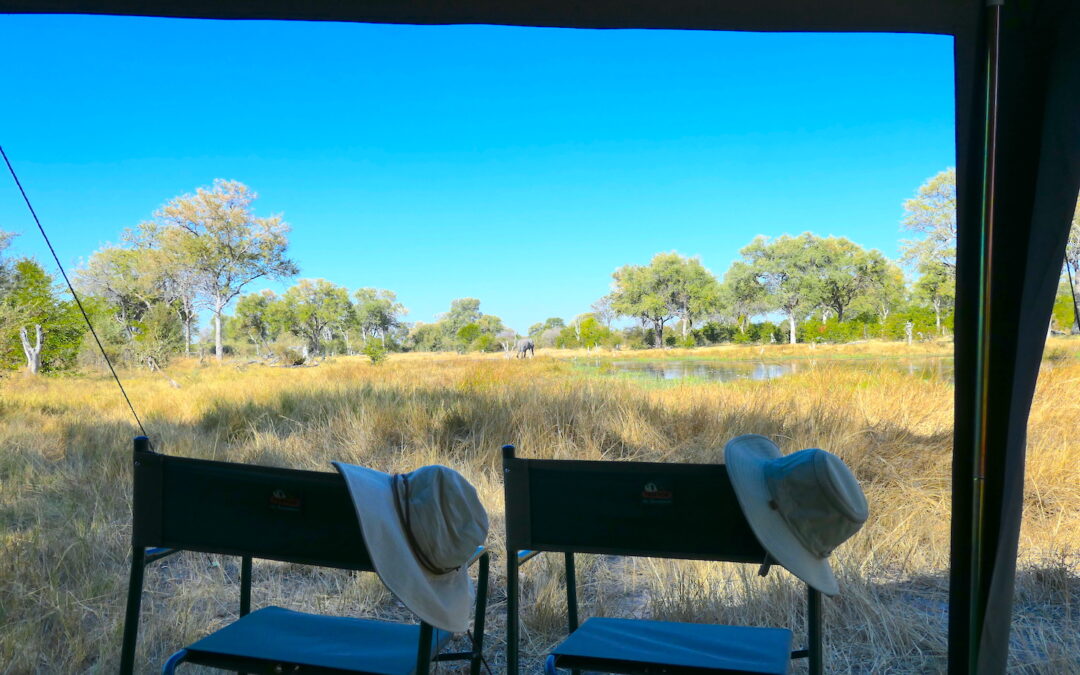
Aug 3, 2019 | Adventure Safari, Brave Africa Safari, Safari Tips
If you’re getting ready to plan your first safari in Botswana, you’re probably concerned about the cost. You’ve heard tales about how Botswana is the most expensive location to safari even as it’s also considered the best.
So, what can you expect when it comes to the cost of a safari in Botswana? Is it only affordable for the wealthy?
We won’t lie and say that going on safari is cheap, but it’s not as expensive as you might think. By choosing the right flights, time of year, and safari experience, you can still have the experience of a lifetime at a price that’s less than you might expect.
Cost of Botswana Safari International Flights
When you first start planning your trip to Africa, you’re probably concerned about the price of plane tickets. After all, it’s expensive to fly short flights. How much more costly is a flight to Botswana?
The U.S. to South Africa — USD $800 – $1400 Round-Trip
If you’re coming from the U.S., there are many options for getting to Johannesburg, South Africa. It all depends on where you’re coming from. In most cases, you’re going to want to make your way to the East Coast.
JFK New York is a popular airport, and right now, flights on Kenya Airways and through Nairobi are just $886 for a round-trip. Going through Los Angeles, you can expect to pay only $1,033 on Qatar Airways through Doha.


Europe to South Africa — USD $663 – $950 Round-Trip
If you’re traveling from Europe, you can expect flights to be a little bit cheaper. From Frankfurt, a flight on Ethiopian Air is just $663 round trip, and on Lufthansa, it’s $916.

Australia to South Africa — USD $1150 – $1500 Round-Trip
From Australia to South Africa, you can expect similar prices as the U.S. Nonstop flights start around $1250 on Qantas Airways.

Flights to Maun — USD $200 – $350 One-Way
Once you make it to South Africa, you then have to take another short international flight—two hours—to get to Maun, Botswana. While Air Botswana is typically your most affordable option, we recommend flying South African Airways for a better guarantee of your flight arriving on time.
Here’s what you can expect to pay to fly to and from Maun, Botswana:
- Johannesburg to Maun: USD $200 – $300 one-way
- Cape Town to Maun: USD $275 – $350 one-way
Flights to Victoria Falls —USD $250 – $319 One-Way
If you decide to visit Victoria Falls before or after your safari, you’ll need flights to or from Victoria Falls:
- Johannesburg to Victoria Falls: USD $250 – $319 one-way
Bush Flights — USD $430 – $600 Round-Trip
Going on safari in Botswana is unique in Africa in terms of travel. While in South Africa, Kenya, and Tanzania, it’s common to drive to your safari camp, in Botswana, that’s not the case.
The remoteness of Botswana’s safari destinations means that driving isn’t a choice for most travelers. It would take up too much time and require a four-wheel-drive vehicle. That’s why bush flights are the popular choice for travelers and safari camps alike.
The good news is that there are many options for chartered bush flights, including:
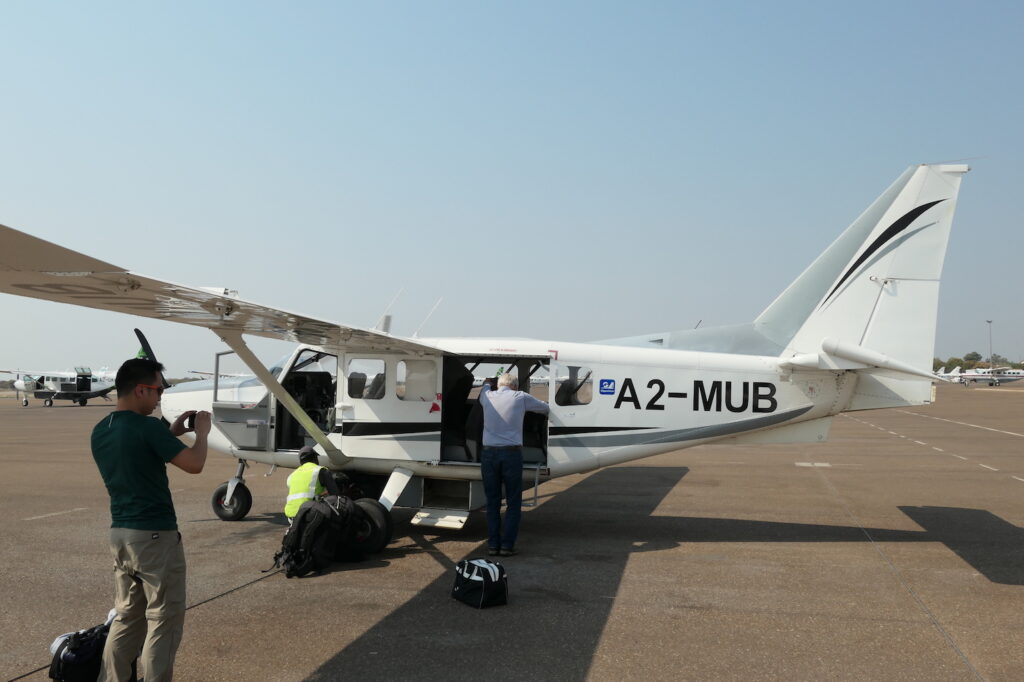
So, what’s the exact cost of Botswana safari bush flights? Your travel agent will, most likely, include it in the total price of your safari. But, if you decide to book your own bush flights in Botswana, we talked to Mack Air to get their 2019/2020 rates.
Maun is your most likely departure point. It’s the most accessible destination to fly to from Johannesburg or Cape Town, which is most likely where you’ll enter Africa for your international flight. The good news is that since Maun is such a popular starting off point, prices are relatively affordable.
- Maun to Xakanaxa: USD $215 per person
- Maun to Khwai: USD $215 per person
- Maun to Savuti: USD $217 per person
However, if you’re coming from or heading to Victoria Falls before or after your safari, then you might use the Kasane airport instead. Due to the airport’s location as well as its less frequent use, flights to and from Kasane are slightly more expensive.
- Kasane to Xakanaxa: USD $372 per person
- Kasane to Khwai: USD $372 per person
- Kasane to Savuti: USD $357 per person

The Cost of a Safari in Botswana
After paying for flights, the only thing you have to worry about is the cost of your safari in Botswana.
The great news about a safari is that it’s all-inclusive. There’s no paying for a hotel and then paying for your food and activities separately. After just a few days, you might not realize how quickly it all adds up.
According to recent surveys of Americans on vacation, each day, on average, you can expect to pay:
- $258 — for a hotel room in a large city such as New York City
- $59 — for a car rental
- $50 — for food
- $100 — all-day activity/tour
That’s a total of $467 per day + $159 per day for every additional person. So, for two people, that equates to $608 per day on average for an international trip. That’s $6,080 for 10-days for a couple.
Now, that price can increase or decrease significantly depending on where you’re heading for a vacation. The more remote the destination or popular the city, the more you can expect to pay.
A safari with Brave Africa isn’t that much more expensive. Our per-person price includes:
- Accommodations
- All meals, snacks, and house beverages (including unlimited alcoholic drinks)
- Laundry
- Road transfers from the nearest airstrip and between our camps
- National park fees
- Emergency medical evacuation insurance
- All-day game drives and professional guiding
For all of that, you can pay as little as $880 per couple per day for a ten-day/nine-night safari in Botswana. That’s barely $270 more per day for a trip of a lifetime.


Total Cost of a Botswana Safari
So, when you add everything up, how much does it cost to go on safari in Botswana for a couple? Let’s add it up.
- International Flights: $2000 per couple
- Maun Flights: $1000 per couple
- Bush Flights: $1000 per couple
- 10-Day Safari: $10,000 per couple (shoulder rack)
Total Cost of a 10-Day Safari in Botswana for Two: USD $14,000
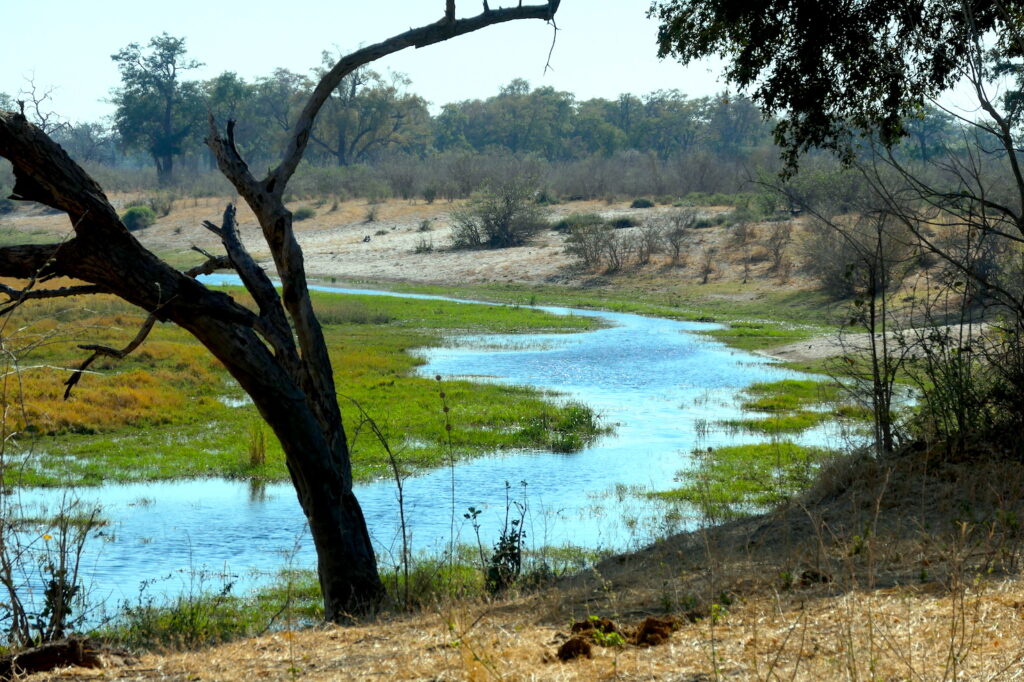
And while that might seem expensive, let’s compare it to a trip to Disney World. This is a fairly decent comparison because you pay a daily fee for all-day activities, aka park tickets and hotels are at a premium on property. We planned a 9-night/10-day vacation and chose the average prices for comparison.
- Hotel: $350/night — $3,150 total
- 10-Day Tickets: $1100 per couple
- 10-Day Dining Plan: $1300 per couple
- International Flights: $2000 per couple
Total Cost of a 10-Day Trip to Disney World in Orlando, FL: USD $7,550
So, would you rather pay half as much and go to Disney World like everyone else or pay a little more and go on a trip that will change your life?
And if you’d like to save some money on flights, we’re writing a blog in a few weeks about using just 80,000 points per person for a round trip flight to South Africa. That’s a $2000 savings! So stay tuned!
